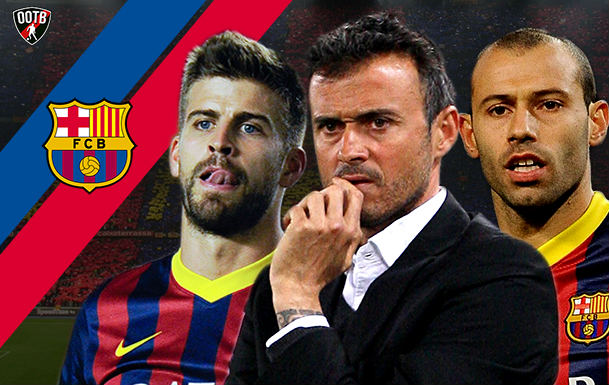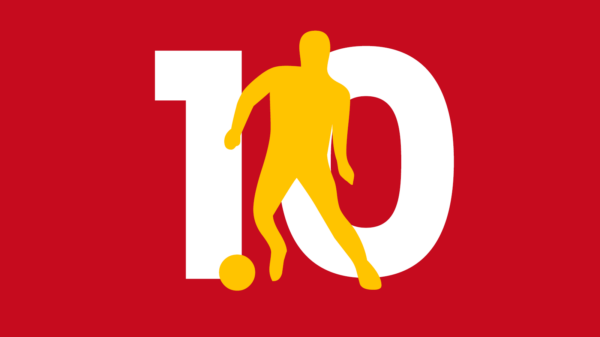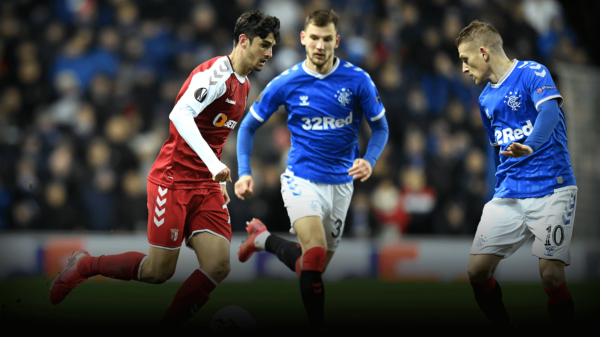As we announced earlier, we have introduced club specific Team Blogs on our site, with various clubs across the World featuring. Cules’ Corner will feature all the best content on FC Barcelona, ranging from tactical pieces to statistical ones and pure opinion articles. Anustup Sikdar here takes a look at whether the 3-2-3-2 can function at Barcelona under Luis Enrique.
While ‘Evolution’ deals with the change in the behaviour of an entity over a period of time, in accordance to the changes in social conditions, ‘Revolution’ however means a turn-around, especially when the particular entity’s back is against the wall.
As for FC Barcelona, the new era under the tutelage of Luis Enrique is perhaps a bit of both. While there is evidence that there will be a change in the behaviour and style, it cannot be denied that Barcelona’s back is against the wall and they hardly have any option other than to turn-around and hit back.
To start with – Luis Enrique
It is an extremely difficult task to shed the stigma of being an ex-Madridista and become a Barcelona fan favourite. Lucho, as Enrique is fondly called, has achieved the impossible – he wasn’t just a player but also a captain later and an inspirational one at that. And today, he is set to pick up from where Guardiola left, as the manager of Barcelona. Lucho indeed has come a long way. Guardiola was a perfectionist, Lucho has more intensity. While both are strong personalities, Enrique also brings into the mix an element of ruggedness and the ability to do the dirty job if the occasion arises.
After the departure of Guardiola there was a certain lackadaisical attitude. The players did not run as much, neither did they press as they did under Guardiola. Yes, with each passing season they aged, and some reached the wrong side of 30, but the intensity, hunger and willingness to give it all was no longer there.

Under Lucho, things are different. Physical fitness is of paramount importance and the former captain has set-up grueling double training sessions – one in the morning and another in the afternoon, during their pre-season training camps.
A staunch disciplinarian that Enrique is, according to the 1st August’14 edition of Sport – a Spanish daily sports newspaper, has reinstated Guardiola’s strict rules:
- Fines ranging from €1000 to €6000 – depending on the offense
- Players must arrive at least an hour before training starts
- Players are prohibited from going out 48 hours prior to a match
- A serious infraction can result in expulsion
These rules had a significant role in making Barcelona the best team on the planet under Guardiola and it can be expected that they will do the same this time as well. While fines to the tune of a few thousand Euros might just be peanuts for athletes earning millions from wages and endorsements, the ignominy associated with the penalty should do the trick.
The Nou Squad
Upon his arrival Enrique made it abundantly clear that he needed reinforcements in multiple positions. Ever since the turn of the millennium, Enrique is the 10th Barcelona manager and has spent a total of €143 million – the highest in the period (the closest being Carles Rexach with €90 million in 2001). While in Rakitic he has probably the ‘deal-of-the-season’, a few redundant transfers might just reinforce Barcelona’s status as a profligate club.
While Luis Suarez is a world-class athlete, he is a walking, talking PR disaster. Yes, his on-field performances are nothing short of extraordinary, he leaves a lot to be desired off it. Jeremy Mathieu on the other hand is not a natural centre back, let alone a world class performer that Barcelona needs at the moment. And to add to it, he is a smoker who is unwilling to quit despite the demands of the situation. Investing more than €100 million on Suarez (27, turning 28 in January 2015) and Mathieu (30, turning 31 in October 2014) makes little sense because Suarez won’t have much of a resale value. Case in point David Villa. And as for Mathieu, you can read a detailed financial analysis here.
The Nou Style
Reports from Spain suggest that Luis Enrique is planning to move to a more dynamic formation – from 4-3-3 to 3-2-3-2. To say the least, the latter will give Mascherano the condition where he can finally thrive and give his best. In the recently concluded World Cup, Mascherano showed that he is one of the best defensive midfielders on the planet and it is to Barcelona’s disadvantage that they did not utilise him in that role all these years. In a 3-2-3-2, the Mascherano-Busquets combo will be nothing short of a dream – a perfect amalgamation of steel and flair.
Mascherano is premium destroyer, but also keeps the team in play with his near-immaculate passing. 626 passes in 720 minutes and 86% accuracy, put Mascherano in third, behind Lahm and Kroos in the 2014 World Cup. While many argue that a lion’s share of those passes were to the player closest to him and behind, it however cannot be denied that Mascherano has it in him to be the perfect partner for the elegant Busquets. 22 tackles and winning 10 of them (second only to Oscar of Brazil), Mascherano further establishes that Barcelona can do well with a double pivot comprising him and the new number 5 for Barcelona, Busquets.

The defence however might have to compromise a bit. Gerard Pique in the centre, with Mathieu to his left and Alves (or Cuardado) to his right might be a bit exposed. However, all these years’ experience as the centre-back for the club, Mascherano will certainly fall back to provide assistance – if you think otherwise, just recall the last-ditch challenge which kept Robben’s vicious shot at bay in the semi-finals of the World Cup.
To cut a long story short, if anybody has his place fixed in the new formation, 3-2-3-2, it’s both Mascherano and Busquets. Up front, Luis Enrique has already made it clear that he might use Messi deep to avoid him from too much exposure to the opposition defence – something similar to his role for Argentina in the World Cup.
It is beyond doubt that Messi has an innate ability for the killer final pass and the one against Belgium to Angel Di Maria further exemplifies that and there’s no reason for him not to succeed in his new deeper role. Moreover this role also gives him a chance to conserve his energy for a final burst in the dying moments of the match. While Neymar and Suarez have enough guile to take away defenders with them on either flank, thereby breaking the defensive shape, it will create enough room for Messi to hurt the opposition.
MORE READING
With Andres Iniesta and Ivan Rakitic (and sometimes Xavi) alongside him, Messi will have enough outlets to release any pressure on him from opposition midfielders and also these guys are capable enough to create chances, should Leo be marked heavily. Ivan Rakitic in particular, as said earlier, is a deal-of-the-season material and his versatility is perhaps his biggest asset. Equally adept in playing deep in the midfield to an advanced role, Rakitic adds the flair, speed, steel and goals-coring option that the Barcelona midfield lacked for quite some time.
If last season’s form is anything to go by, Rakitic’s form is an auspicious sign for Barcelona and his performance against Real Madrid at the Sanchez Pizjuan was perhaps the best of the season.
Lionel Messi, Gareth Bale, Alexis Sanchez, Carlos Vela and Ivan Rakitic – only players last season to have both goals and assists in double digits in La Liga, add to that Rafinha, Sergi Roberto, Deulofeu, Adriano – it just signifies the plethora of options that Barcelona will have in midfield this season.
The Nou Problems
Everything seems bright and sunny so far but there are a few niggling issues which needs to be attended to prevent raucous repercussions.
The new formation might just not allow Pedro, Alba, Bartra and Xavi to be regulars for Barcelona. It is still understandable for Xavi and to some extent Pedro, but not for Alba and Bartra. While Alba is of slight frame, he has enough pace and trickery to trouble the opposition down their right flank and with Iniesta and Neymar on that side, it could have been a vicious trio. Mathieu will get his chances, but it is still not clear if he will be able to play the role so effectively carried out by Alba.
As for Bartra, the young centre-back played a big part in Barcelona’s 2013-14 season and despite the obvious frailties, he has had enough exposure due to injuries to senior players and unavailability. A 3-man defence will significantly reduce his chances this season, unless of course there is yet another injury problem. Barcelona are reportedly in the market for another centre-back. While Marquinhos is a young and extremely expensive option, a possible transfer of either Agger (Liverpool) or Vermaelen (Arsenal) is gaining traction.
MORE READING
To be frank, Barcelona are perhaps targeting the wrong personnel for the position of a centre-back. Either they are yet to reach the level (a la Marquinhos) or with all due respect are has-beens (Mathieu, Agger, and Vermaelen). With the exception of Mathieu, none are regular starters for their respective clubs. Instead of spending their money on such targets a move for either Mehdi Benatia (AS Roma) or Mats Hummels (BVB Dortmund) or even Inigo Martinez (Real Sociedad) could have solved their problem at the back significantly.
Barcelona would then have 3 proper centre-backs in the squad – Pique, Bartra and Benatia/Hummels/Martinez with Mascherano and Adriano as more than able back-ups in dire circumstances. Over the course of the season, the club usually plays more than 50 matches. Bartra would have played a significant amount under such conditions.
Dani Alves has been an undisputed starter for Barcelona over the years, but it is high time to realise that his spell at the club should perhaps up. He isn’t getting any younger and his most effective weapon – his pace, has taken a slight beating and is on the wane. Targeting Juan Cuardado is a prudent move but it must be kept in mind that the Colombian is an offensive player, who can seamlessly operate from the right side of defence, but in a 3-man function, his propensity to move ahead might just leave them exposed. The most important aspect of a 3-man defence is its tactical discipline and shape. However, if Cuardado is made to curb his instincts, in a way his effectiveness will be rendered useless.
Luis Enrique doesn’t boast of exemplary managerial record either for AS Roma or Celta Vigo, but on the flipside he has worked with the youngsters at Masia and have an idea of their abilities.
Ever since Pedro and Busquets came out of the academy under the tutelage of Guardiola, no one has been able to create a significant impact and make it to the first team – not even Bartra. This should essentially change under Enrique so as to avoid another Alcantara-situation. In Deulofeu and Rafinha, Enrique has some of the brightest talents in Spain and how exactly he uses the resources in repertoire will spell the season to come for FC Barcelona.
Written by Anustup Sikdar. Follow him on Twitter @anustupsikdar
What do you think? Will the 3-2-3-2 work at Barcelona? Can Luis Enrique succeed at the helm? Or is there a recipe for disaster brewing? Let us know with a comment below.
His favourite book is Soccernomics by Simon Kuper & Stefan Szymanski
- Analysis: Will the 3-2-3-2 work at Barcelona under Luis Enrique? - August 7, 2014



























































